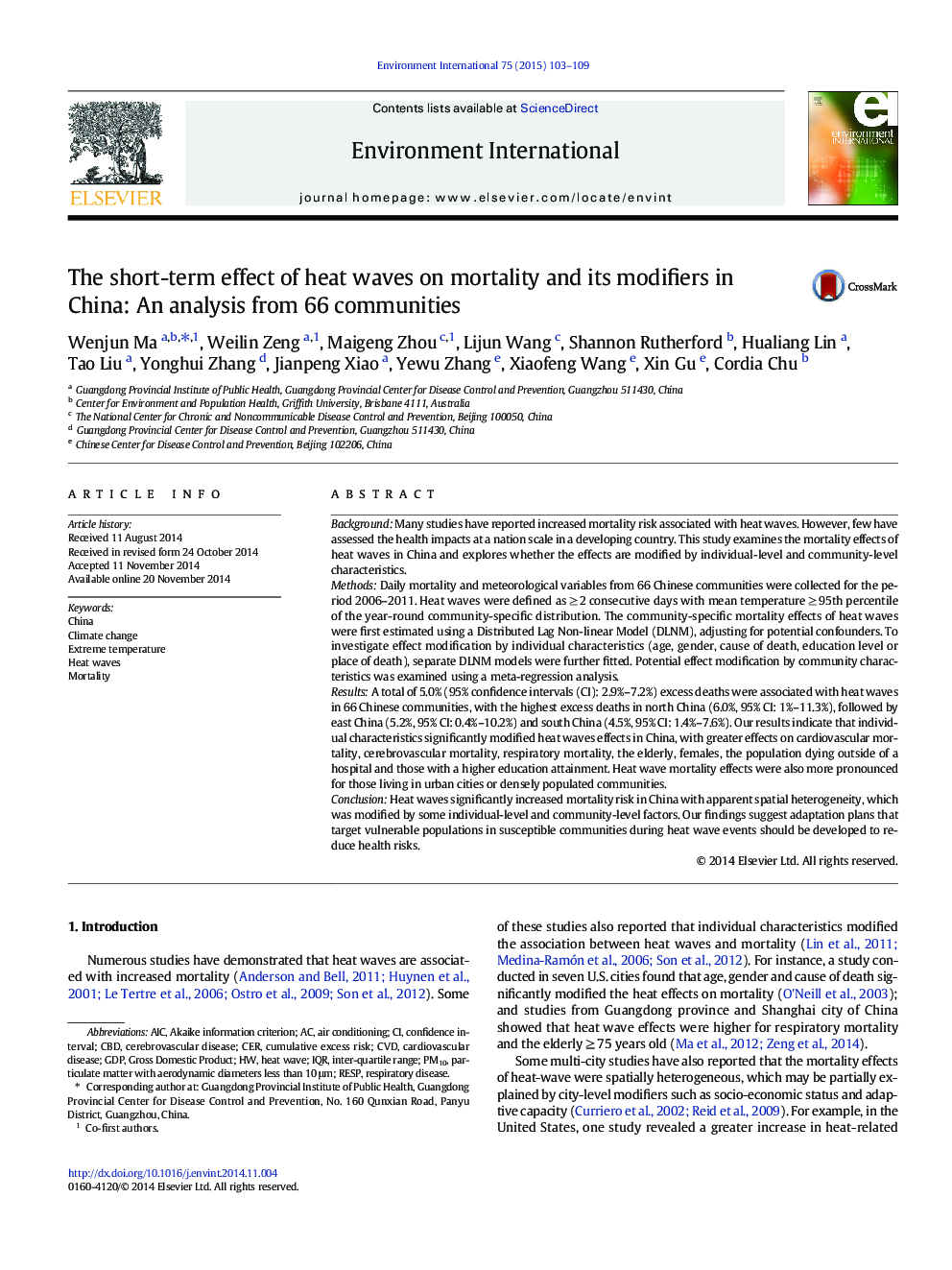| Article ID | Journal | Published Year | Pages | File Type |
|---|---|---|---|---|
| 4422698 | Environment International | 2015 | 7 Pages |
•Heat wave significantly increased mortality risk in 66 communities of China.•The heat wave mortality effects were higher in north China than east and south China.•The heat wave mortality effects were higher for CVD, CBD, RESP, the elderly and females.•The heat wave mortality effects were higher for people dying outside the hospital.•The heat wave mortality effects were higher for those living in urban cities or densely populated communities.
BackgroundMany studies have reported increased mortality risk associated with heat waves. However, few have assessed the health impacts at a nation scale in a developing country. This study examines the mortality effects of heat waves in China and explores whether the effects are modified by individual-level and community-level characteristics.MethodsDaily mortality and meteorological variables from 66 Chinese communities were collected for the period 2006–2011. Heat waves were defined as ≥ 2 consecutive days with mean temperature ≥ 95th percentile of the year-round community-specific distribution. The community-specific mortality effects of heat waves were first estimated using a Distributed Lag Non-linear Model (DLNM), adjusting for potential confounders. To investigate effect modification by individual characteristics (age, gender, cause of death, education level or place of death), separate DLNM models were further fitted. Potential effect modification by community characteristics was examined using a meta-regression analysis.ResultsA total of 5.0% (95% confidence intervals (CI): 2.9%–7.2%) excess deaths were associated with heat waves in 66 Chinese communities, with the highest excess deaths in north China (6.0%, 95% CI: 1%–11.3%), followed by east China (5.2%, 95% CI: 0.4%–10.2%) and south China (4.5%, 95% CI: 1.4%–7.6%). Our results indicate that individual characteristics significantly modified heat waves effects in China, with greater effects on cardiovascular mortality, cerebrovascular mortality, respiratory mortality, the elderly, females, the population dying outside of a hospital and those with a higher education attainment. Heat wave mortality effects were also more pronounced for those living in urban cities or densely populated communities.ConclusionHeat waves significantly increased mortality risk in China with apparent spatial heterogeneity, which was modified by some individual-level and community-level factors. Our findings suggest adaptation plans that target vulnerable populations in susceptible communities during heat wave events should be developed to reduce health risks.
